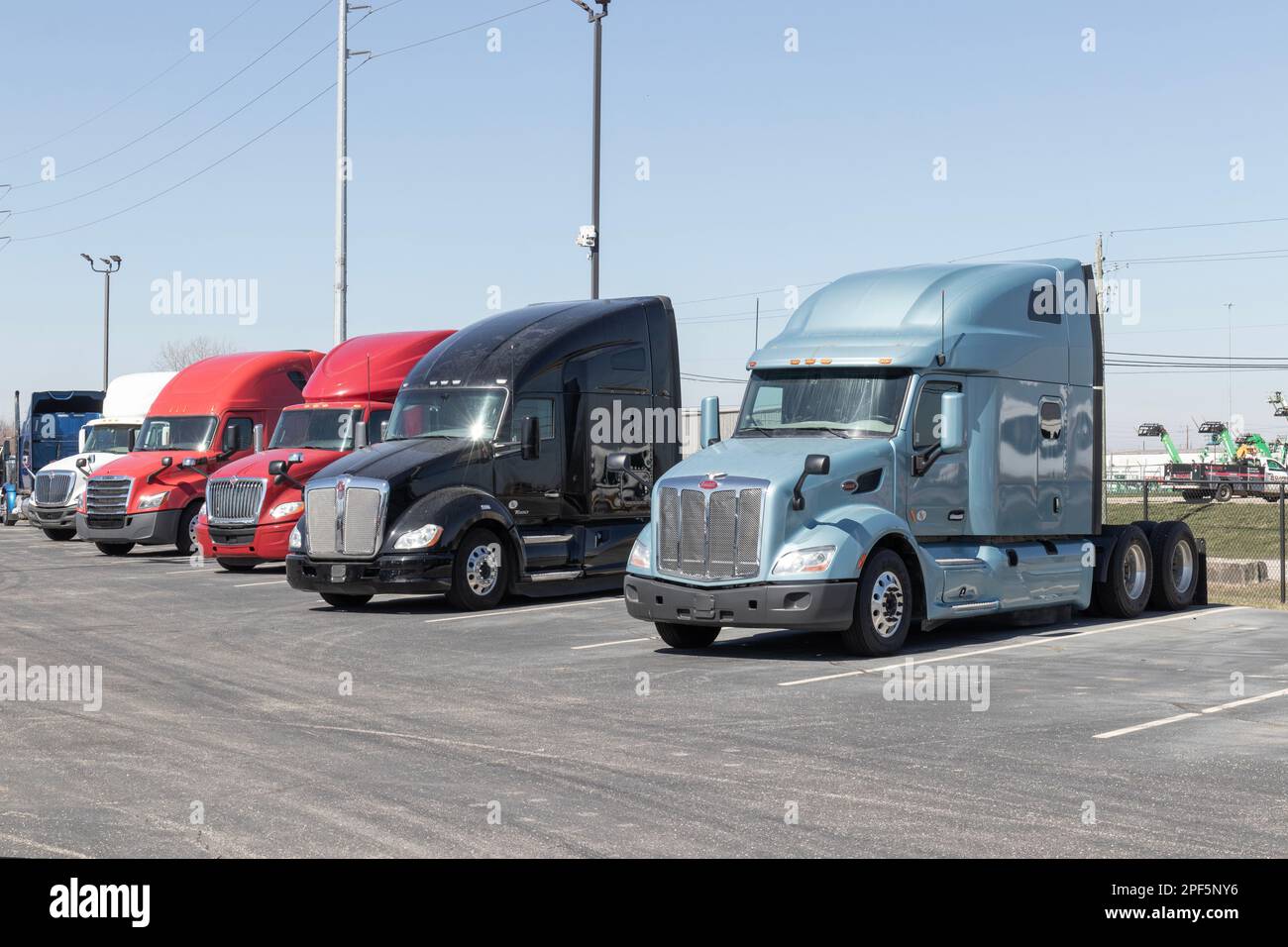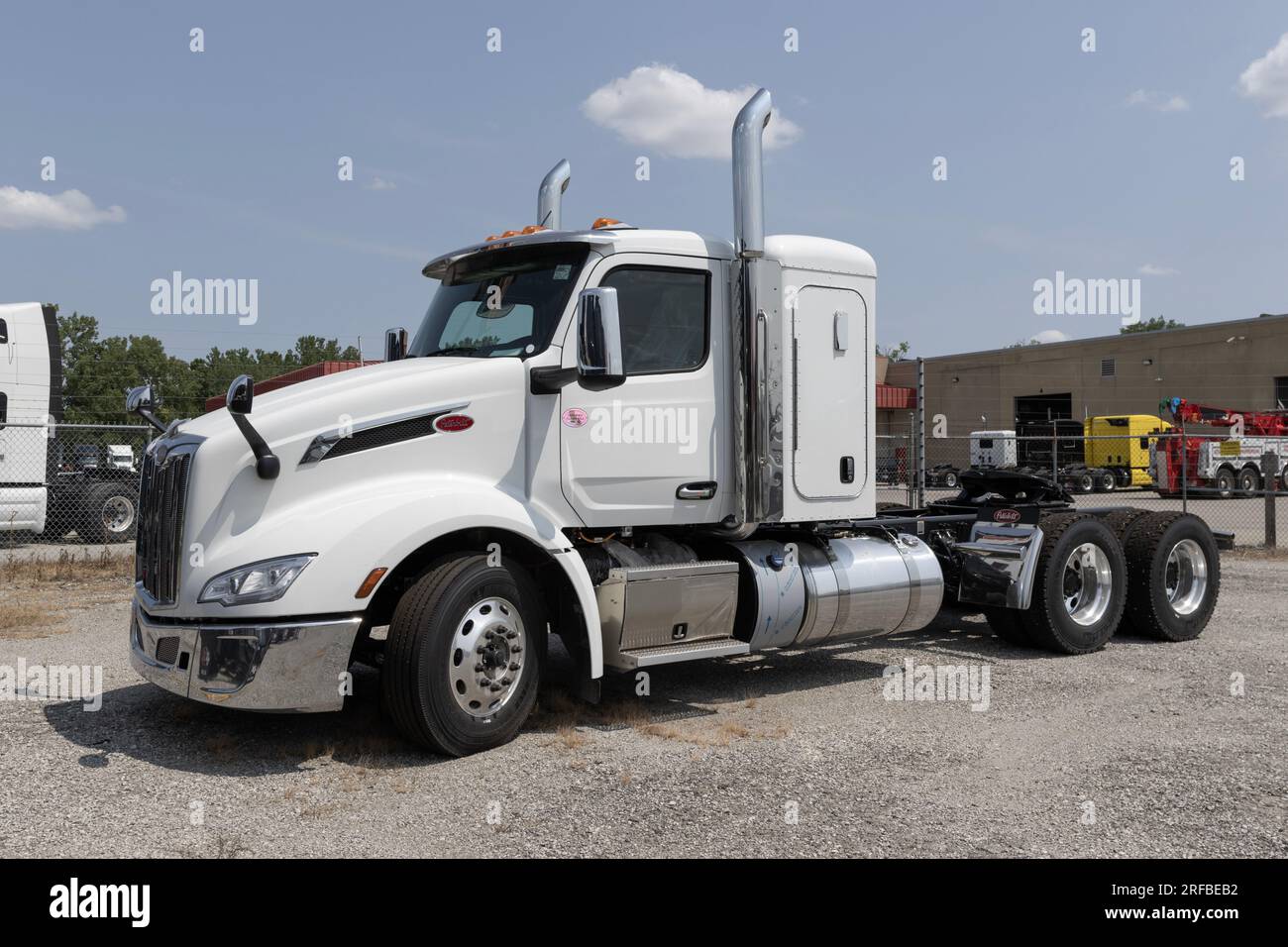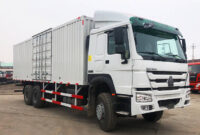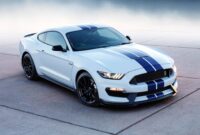Peterbilt And Kenworth Trucks For Sale: Your Ultimate Buying Guide pickup.truckstrend.com
The roar of a powerful engine, the gleam of polished chrome, and the promise of the open road – for many, a semi-truck is more than just a vehicle; it’s a livelihood, a passion, and a symbol of independence. Among the titans of the trucking industry, Peterbilt and Kenworth stand as venerable giants, synonymous with quality, durability, and driver satisfaction. For decades, these two PACCAR-owned brands have dominated highways and job sites, earning a legendary reputation for their engineering excellence and iconic designs.
If you’re in the market for a new or used heavy-duty truck, considering a Peterbilt or Kenworth is often the first logical step. This comprehensive guide will delve into everything you need to know about finding Peterbilt and Kenworth trucks for sale, from understanding their legacy to navigating the buying process, ensuring you make an informed decision that drives your success.
Peterbilt And Kenworth Trucks For Sale: Your Ultimate Buying Guide
The Enduring Legacy of Peterbilt and Kenworth
Before diving into the specifics of purchasing, it’s essential to appreciate what makes Peterbilt and Kenworth such highly sought-after brands.
Peterbilt: Founded in 1939, Peterbilt Motors Company is renowned for its classic styling, robust construction, and driver-centric design. Often referred to as "The Class of the Industry," Peterbilt trucks are celebrated for their strong resale value, durability, and the pride of ownership they inspire. From the iconic long-nose 379/389 to the aerodynamic 579, Peterbilt offers a range of trucks that combine performance with timeless aesthetics.
Kenworth: Established even earlier, in 1923, Kenworth Truck Company prides itself on building "The World’s Best" trucks. Known for their rugged reliability, powerful engines, and comfortable interiors, Kenworth trucks are built to withstand the harshest conditions while providing a smooth ride for the driver. Models like the classic W900 and the modern T680 exemplify Kenworth’s commitment to quality and innovation.
Both brands are part of PACCAR Inc., which means they often share core technologies, including PACCAR engines (MX-11, MX-13) and advanced safety systems. However, each brand maintains its distinct identity, design philosophy, and loyal following, offering buyers a rich array of choices tailored to specific needs and preferences.
Key Considerations When Buying a Used Peterbilt or Kenworth
Purchasing a heavy-duty truck is a significant investment. When looking at Peterbilt and Kenworth trucks for sale, careful consideration of several factors will help you find the right vehicle for your operation.
1. Define Your Purpose and Application

What kind of work will the truck be doing?
- Long-Haul (Over-the-Road): Requires large sleepers, fuel efficiency, and comfortable cabs (e.g., Peterbilt 579, Kenworth T680).
- Regional Haul: Shorter hauls, less emphasis on large sleepers, good maneuverability (e.g., Peterbilt 579 day cab, Kenworth T680 day cab).
- Vocational/Specialty: Dump trucks, logging trucks, concrete mixers, heavy-haul (e.g., Peterbilt 567, Kenworth T880, T800). These require specific axle configurations, PTOs, and reinforced frames.

2. Engine and Drivetrain
The heart of your truck. Both Peterbilt and Kenworth offer:
- PACCAR Engines (MX-11, MX-13): Designed and built by PACCAR, these engines are known for their fuel efficiency, integrated design, and seamless compatibility with PACCAR chassis.
- Cummins Engines (X15, ISX): A long-standing industry favorite, Cummins engines offer powerful performance and a vast network of service centers.
- Transmissions: Manual transmissions (e.g., Eaton Fuller 10-speed, 13-speed, 18-speed) are common in older models, while automated manual transmissions (AMTs) like the Eaton UltraShift, Eaton Endurant, and Allison automatics are prevalent in newer trucks, offering ease of operation and often better fuel economy.

3. Mileage and Age
While a higher mileage truck might be cheaper, a well-maintained one can still have plenty of life left.
- Sweet Spot: Many buyers look for trucks between 300,000 to 700,000 miles. Beyond 700,000, major component replacements (engine overhaul, transmission) become more likely.
- Age: Newer models often come with advanced safety features, better fuel efficiency, and modern comforts. However, older trucks (especially Peterbilt 379s and Kenworth W900s) are prized for their classic appeal and mechanical simplicity.
4. Maintenance Records
This is paramount. A complete service history provides insight into how well the truck was cared for. Look for:
- Regular oil changes, filter replacements.
- Records of major component repairs or replacements (engine, transmission, differentials).
- Proof of emissions system maintenance (DPF cleaning, DEF system checks).
5. Pre-Purchase Inspection (PPI)
Never skip this step, especially for used trucks. Have an independent, qualified heavy-duty truck mechanic inspect the vehicle thoroughly. They can identify potential issues that aren’t obvious, saving you significant repair costs down the line.
6. Interior and Amenities
For long-haul drivers, the cab is your second home.
- Sleeper Size: From day cabs to 72-inch or 86-inch "studio" sleepers, choose based on your needs.
- Amenities: Check for working HVAC, power inverters, refrigerators, comfortable seating, and sufficient storage.
7. Axle Configuration and GVWR
Ensure the truck’s configuration matches your payload requirements.
- 6×4 (Tandem Axle): Most common for heavy hauling.
- 4×2 (Single Axle): Suitable for lighter loads or specialized applications.
- Gross Vehicle Weight Rating (GVWR) / Gross Combination Weight Rating (GCWR): Ensure the truck’s ratings align with the weight of the loads you intend to carry.
8. Emissions Systems (DEF/DPF)
Trucks manufactured after 2007 include diesel particulate filters (DPF) and after 2010, selective catalytic reduction (SCR) systems requiring diesel exhaust fluid (DEF). These systems are critical for compliance but can be costly to maintain or repair if neglected. Understand their history and condition.
Popular Peterbilt Models for Sale
Peterbilt 379/389
- Iconic Status: The quintessential American long-nose truck. The 379 was replaced by the 389, maintaining its classic styling.
- Features: Strong resale value, highly customizable, robust chassis, often powered by Cummins or CAT engines.
- Ideal for: Drivers seeking a traditional, powerful, and visually striking truck, often for owner-operators.
Peterbilt 579
- Modern Aerodynamics: Peterbilt’s flagship aerodynamic model, designed for fuel efficiency.
- Features: Spacious and quiet cab, advanced driver assist systems, PACCAR MX engines, excellent fuel economy, available with large sleepers.
- Ideal for: Long-haul operations where fuel efficiency, driver comfort, and modern amenities are priorities.
Peterbilt 567
- Vocational Workhorse: A versatile and rugged truck designed for demanding vocational applications.
- Features: High ground clearance, durable chassis, excellent visibility, available with various PTO options, often with PACCAR MX or Cummins X15 engines.
- Ideal for: Construction, heavy haul, refuse, dump, and other specialized jobs requiring strength and adaptability.
Popular Kenworth Models for Sale
Kenworth W900
- Timeless Classic: Kenworth’s iconic long-nose conventional, beloved for its traditional styling and powerful presence.
- Features: Exceptional durability, driver appeal, strong resale value, often equipped with Cummins engines.
- Ideal for: Owner-operators and drivers who appreciate classic aesthetics, robust performance, and a powerful statement on the road.
Kenworth T680
- Aerodynamic Efficiency: Kenworth’s most fuel-efficient long-haul truck, combining aerodynamics with comfort.
- Features: Spacious and quiet interior, advanced technology, PACCAR MX engines, integrated powertrain options, excellent ride quality.
- Ideal for: Fleets and owner-operators focused on maximizing fuel economy, driver comfort, and advanced safety features for over-the-road applications.
Kenworth T800/T880
- Rugged Versatility: The T800 (and its successor, the T880) are Kenworth’s vocational heavy-duty trucks.
- Features: Extremely durable chassis, high payload capacity, superior maneuverability, wide range of configurations (dump, mixer, logging, heavy haul).
- Ideal for: Demanding work environments where durability, reliability, and application-specific customization are critical.
Where to Find Peterbilt and Kenworth Trucks for Sale
1. Authorized Dealerships
- Pros: Often offer certified used trucks, warranties (on newer models), financing options, and access to service and parts. Trucks are typically inspected and reconditioned.
- Cons: Higher prices compared to private sellers or auctions.
2. Online Marketplaces
- TruckPaper.com: One of the largest online marketplaces for heavy-duty trucks, offering a vast selection.
- CommercialTruckTrader.com: Another popular platform with a wide array of listings from dealers and private sellers.
- TruckerToTrucker.com: Specializes in connecting truck buyers and sellers.
- eBay Motors: Can be a source, but exercise extreme caution with inspections.
- Pros: Huge selection, ability to filter by model, year, price, and location, easy comparison.
- Cons: You’ll need to arrange inspections and potentially travel. Scams can occur.
3. Auctions
- Ritchie Bros. Auctioneers, IronPlanet, Taylor & Martin: Major players in heavy equipment and truck auctions.
- Pros: Potential for significant savings, wide variety of trucks available.
- Cons: Trucks are often sold "as-is, where-is," meaning no warranty and limited opportunity for thorough inspection before bidding. High risk without expert knowledge.
4. Private Sellers
- Pros: Often more negotiable on price, direct communication with the previous owner for history details.
- Cons: No warranty, limited financing options, potential for less transparency regarding maintenance. Always demand detailed records and a PPI.
Financing Your Peterbilt or Kenworth Purchase
Financing a heavy-duty truck is different from financing a car.
- Traditional Banks/Credit Unions: May offer competitive rates if you have excellent credit and a solid business history.
- Dealership Financing: Many authorized dealerships have partnerships with lenders specializing in commercial truck loans.
- Specialized Truck Financing Companies: Companies like PACCAR Financial (for Peterbilt and Kenworth), CIT, or Ryder offer tailored loan and lease options for commercial vehicles, often more flexible with credit requirements for new businesses.
- Key Factors: Your credit score, down payment amount (typically 10-20% for used trucks), and the age/mileage of the truck will influence loan terms and interest rates.
Tips for a Successful Purchase
- Set a Realistic Budget: Include not just the purchase price but also insurance, registration, initial maintenance, and potential unforeseen repairs.
- Do Your Homework: Research specific models, common issues, and average prices.
- Inspect, Inspect, Inspect: A pre-purchase inspection is your best defense against buying a lemon.
- Verify Maintenance Records: Don’t just take a seller’s word; ask for physical or digital proof.
- Test Drive Extensively: Drive it loaded if possible, and check all functions (brakes, lights, HVAC, cruise control, gauges).
- Negotiate Confidently: Be prepared to walk away if the deal isn’t right. Use any inspection findings as leverage.
- Understand the Fine Print: Read all sales agreements, financing terms, and warranty details carefully.
Peterbilt And Kenworth Trucks Estimated Price Ranges
Prices for Peterbilt and Kenworth trucks vary significantly based on year, mileage, condition, engine, transmission, specific features, and regional market demand. The table below provides estimated ranges for popular used models and should be used as a general guide only.
| Model | Year Range | Estimated Price Range (USD) | Key Feature/Note |
|---|---|---|---|
| Peterbilt 389 | 2010-2023 | $60,000 – $250,000+ | Iconic styling, strong resale, powerful engines. |
| Peterbilt 579 | 2014-2023 | $40,000 – $200,000+ | Aerodynamic, fuel-efficient, modern comfort. |
| Peterbilt 567 | 2014-2023 | $50,000 – $220,000+ | Vocational, rugged, versatile chassis. |
| Kenworth W900 | 2010-2023 | $65,000 – $260,000+ | Classic long-nose, durable, driver appeal. |
| Kenworth T680 | 2014-2023 | $45,000 – $210,000+ | Aerodynamic, spacious cab, advanced technology. |
| Kenworth T880 | 2014-2023 | $55,000 – $230,000+ | Vocational workhorse, heavy-duty, versatile. |
| Peterbilt 379 | 1987-2007 | $30,000 – $100,000+ | Older classic, highly sought-after, strong aftermarket. |
| Kenworth T800 | 2007-2013 | $35,000 – $80,000+ | Predecessor to T880, reliable vocational truck. |
Note: These prices are estimates for trucks in good to excellent used condition. New trucks will be significantly higher, often starting from $150,000 and going upwards of $250,000+ depending on customization.
Frequently Asked Questions (FAQ)
Q1: Which is better, Peterbilt or Kenworth?
Both brands are top-tier and belong to the same parent company (PACCAR), sharing many components. The choice often comes down to personal preference for styling, interior design, and specific model features. Peterbilt is often associated with classic, stylish designs, while Kenworth is known for its rugged durability and comfortable cabs. Test driving both is recommended.
Q2: What is considered good mileage for a used semi-truck?
For a heavy-duty truck, "good mileage" is relative to its age and maintenance history. Trucks with 300,000 to 700,000 miles are generally considered to be in a good range for used purchases, assuming they have been well-maintained. Trucks over 1 million miles can still be viable if major components (engine, transmission) have been rebuilt or replaced.
Q3: Should I buy a truck with a PACCAR or Cummins engine?
Both PACCAR and Cummins engines are reliable and widely used. PACCAR engines (MX-11, MX-13) are designed for optimal integration with the PACCAR chassis, often leading to better fuel efficiency. Cummins engines (X15) have a long-standing reputation for power and a vast service network. Your choice may depend on personal preference, specific power requirements, and familiarity with either engine’s maintenance.
Q4: What’s the average lifespan of a semi-truck?
With proper maintenance, a modern semi-truck can easily last for 1 million to 1.5 million miles or more. Many trucks continue to operate reliably well beyond that, especially if major components are rebuilt or replaced over their lifetime.
Q5: How important are maintenance records when buying a used truck?
Extremely important. Comprehensive maintenance records provide a clear history of the truck’s care, identifying potential recurring issues, and confirming that routine services were performed. A lack of records is a major red flag and should prompt a more thorough inspection or reconsideration.
Q6: Can I finance an older, higher-mileage truck?
Yes, but it can be more challenging. Lenders specializing in commercial truck financing are often more flexible than traditional banks. However, older trucks (e.g., pre-2010) or those with very high mileage may require a larger down payment, come with higher interest rates, or have shorter loan terms. Your credit score and business history will also play a significant role.
Conclusion
The search for Peterbilt and Kenworth trucks for sale opens up a world of possibilities for owner-operators and fleets alike. These brands represent the pinnacle of American trucking, offering a blend of performance, durability, and driver appeal that few can match. By understanding your specific needs, conducting thorough research, and diligently inspecting any potential purchase, you can navigate the market with confidence.
Whether you choose the classic allure of a Peterbilt 389 or the modern efficiency of a Kenworth T680, investing in one of these iconic trucks is not just buying a vehicle; it’s investing in a legacy of reliability and a partner for the long haul. Take your time, do your due diligence, and soon you’ll be behind the wheel of a truck that’s built to conquer the road ahead.



